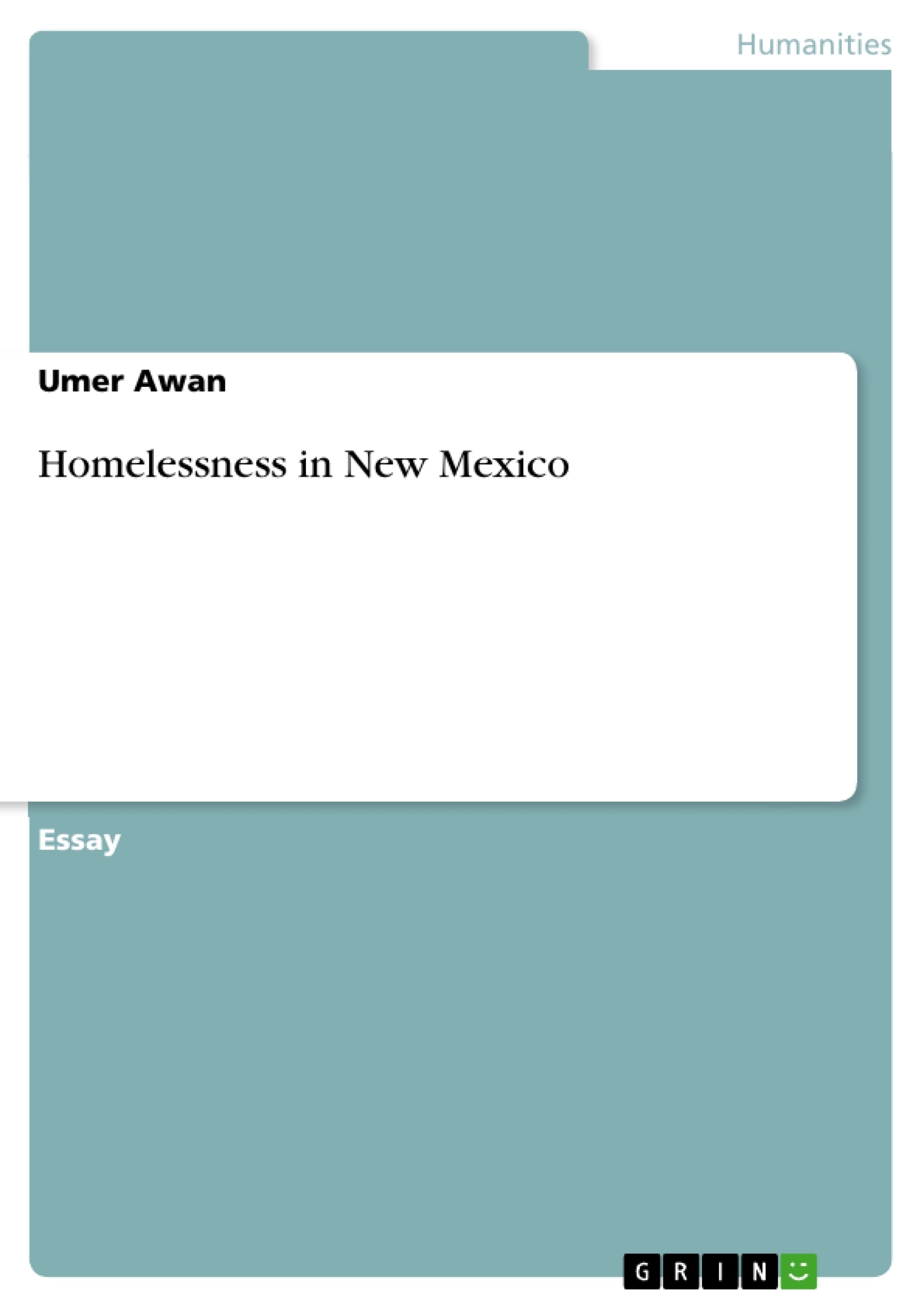While discussing social problems the biggest problem which comes to mind is “Homelessness”. It is very difficult to analyze the homelessness globally. The objective of this study is to discuss the homelessness in New Mexico and also this study will consist of the discussion about how the children have been neglected in New Mexico. Many Children have not only been neglected but have been thrown out and are living without a home or sheltered place. According to the static records, more than 20 million children are facing poverty out of which more than 5 million children are extremely poor. 15,000 children are homeless and have no place to live.
Table of Contents
- Problem Description
- Ages of Homeless People
- Healthy and Disabled Homeless
- Effect of Homelessness on Children
- Physical Development of Homeless Children
- Academic Development of Homeless Children
- How to Minimize?
Objectives and Key Themes
This study aims to investigate the issue of homelessness in New Mexico, with a particular focus on the impact of homelessness on children. The study explores the prevalence of homelessness in the state, examines the factors contributing to homelessness, and analyzes the effects of homelessness on children's physical, emotional, and academic development.
- The prevalence and impact of homelessness in New Mexico
- The effects of homelessness on children's development
- The role of poverty and disability in homelessness
- Strategies for minimizing homelessness and its effects
- The importance of supportive services and programs for homeless individuals and families
Chapter Summaries
- Problem Description: This chapter introduces the problem of homelessness in New Mexico and highlights the specific challenges faced by children. It provides statistics on the number of children living in poverty and homelessness in the state.
- Ages of Homeless People: This chapter examines the demographics of homelessness in New Mexico, focusing on the age distribution of homeless individuals. It reveals that the majority of homeless individuals are over 24 years old, followed by those between 18 and 24 years old.
- Healthy and Disabled Homeless: This chapter discusses the challenges faced by homeless individuals with disabilities. It emphasizes the need for transitional housing and supportive services to help disabled individuals regain independence.
- Effect of Homelessness on Children: This chapter explores the profound impact of homelessness on children's development. It details how homelessness can negatively affect children's emotional, physical, social, cognitive, and behavioral development.
- Physical Development of Homeless Children: This chapter examines the specific health challenges faced by homeless children. It highlights the increased risk of infectious diseases, nutritional deficiencies, and poor overall health due to lack of access to healthcare and healthy living conditions.
- Academic Development of Homeless Children: This chapter focuses on the academic performance of homeless children. It explores the challenges they face in school due to their circumstances and emphasizes the need for additional support services.
- How to Minimize?: This chapter explores strategies and interventions for minimizing homelessness and its effects on children in New Mexico. It emphasizes the importance of supportive housing, alcohol treatment programs, after-school programs, and other interventions.
Keywords
Homelessness, New Mexico, Children, Poverty, Disability, Supportive Housing, Transitional Housing, Health, Education, Development, Social Services, Interventions, Programs, Strategies.
- Quote paper
- Umer Awan (Author), 2016, Homelessness in New Mexico, Munich, GRIN Verlag, https://www.grin.com/document/340981



